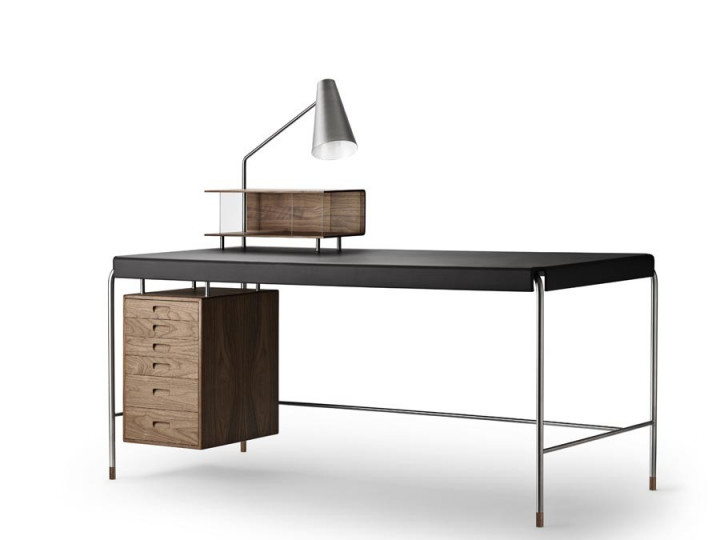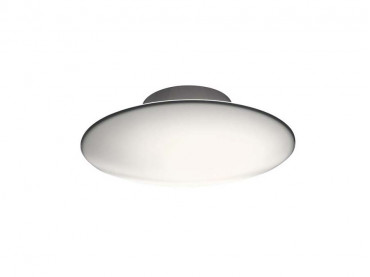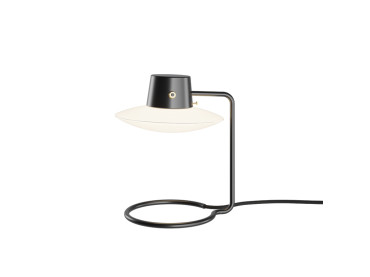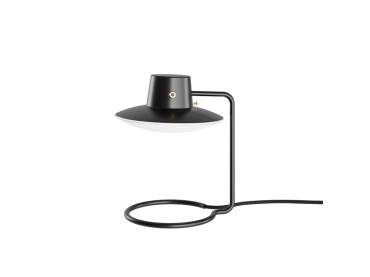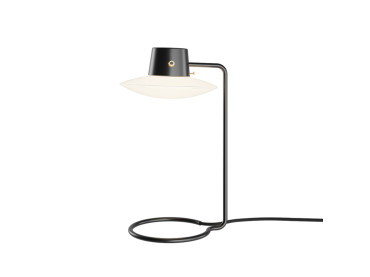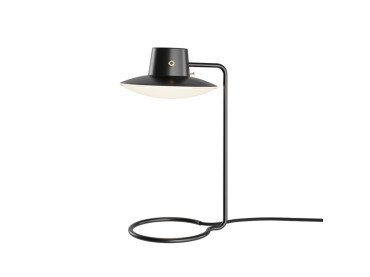Mid-Century modern scandinavian desk model AJ52 "Society table" by Arne Jacobsen.
-
Arne Jacobsen
-
Carl Hansen & Søn
- CH103 On demand. Delivery time 8-10 weeks
Mid-Century modern scandinavian desk model AJ52 "Society table" by Arne Jacobsen. *Required step
In order to help you to choose, and to receive samples, do not hesitate to contact us by email: contact@galerie-mobler.com or by phone: 01 43 33 20 12
A timeless example of the Danish architect’s functionalist approach to design, Arne Jacobsen’s AJ52 Society Table was conceived in 1952, at the peak of his career. Jacobsen harnessed new techniques and materials to create the slender writing desk, which features a fine-structured leather top that wraps tightly around a tubular metal frame. A conical desk lamp in brushed stainless steel is a seamless extension of the design, as is the glass-fronted, wood-and-veneer letter compartment. Beneath the table, a six-drawer unit, also in wood and veneer, is suspended from fine metal tubes – a feature that, together with the slim frame and solid-wood feet, contributes to the desk’s air of lightness. The AJ52 Society Table is available in two sizes, and with or without the tabletop compartment and desk lamp. This is the larger of the two, measuring 160 x 70 cm. The six-drawer unit can be mounted beneath the left or righthand side of the table; choose from solid oak, walnut or black-painted oak drawers and matching feet. Structure en acier inoxydable. Deux dimensions : 140 cm x 70 cm et 160 x 70 cm.
| Year | 1952 |
| Dimensions | H : 130 cm. L : 160 cm. D : 70 cm. |
| Material | Leather. Stainless steel. Oak or walnut drawer. |
| Style | Classique Neuf |
| Origin | Denmark. |
| Fournisseur | Carl Hansen & Søn |
Arne Jacobsen
Denmark (1902-1971)
Arne Jacobsen trained at the Technical School and continued his training at The Royal Danish Academy of Fine Arts’ School of Architecture, graduating in 1927. He was employed with the city architect in Copenhagen 1927-29 and then established his own design practice. 1956-65 he was a professor at The Royal Danish Academy of Fine Arts’ School of Architecture. Arne Jacobsen worked as an architect and designer.
During his education at the School of Architecture he was influenced by neo-classicism, but around 1930 he helped introduce functionalism in Denmark. Inspired by international functionalism, he in the following years designed the white housing estate Bellavista in Klampenborg (1934), the town halls inAarhus (1942) and Rødovre (1956), SAS Royal Hotel in Copenhagen (1960) and St. Catherine’s College in Oxford (1964). Jacobsen believed that each element of a house should be shaped by the architect. This is why most of his furniture was developed in connection with particular building projects. The three-legged stacking chair, the Ant, from 1952 (RP00619) was designed for the new small Danish dining kitchens and was simultaneously also used in canteens, the first time in the pharmaceutical factory Novo’s canteen. The Ant, a stacking chair in moulded veneer, was Denmark’s first actual industrially produced chair and soon had four-legged follow-ups such as the 7 and the Seagull (RP03214).
For SAS Royal Hotel he designed the organically shaped foam plastic chairs the Egg, the Swan (RP00128) and the Drop (RP01005), and for the teachers’ table in the dining room at St. Catherine’s College, the monumental Oxford chair (RP02993).
Arne Jacobsen is one of his generations’ great architects and the sculptural chair the Ant, the Egg and the Swan put him on the map as a world-class designer.

